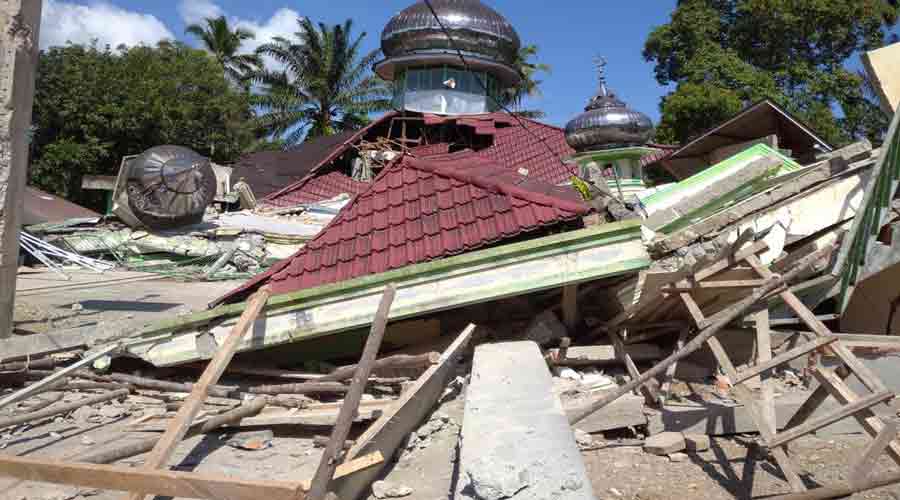Over a month after three deadly earthquakes struck Turkiye, experts are trying to piece together information on the compliance level of buildings in the geologically fragile region.
A recent report outlining preliminary findings of damage assessment of the earthquakes shows violations of the building code stipulations in the past two decades contributed to a large number of lives lost and extensive damage to infrastructure.
Over 48,000 people have died so far in the February 6 quakes and nearly 1.2 lakh people have been injured.
The report by a team of scientists from Middle East Technical University (METU), Ankara, and colleagues also observed that in Gaziantep, Hatay, Kahramanmaraş, and Adıyaman provinces, the buildings were subjected to seismic shocks larger than what the Turkish Earthquake Code (2018) design levels provided for.
The experts noted that regardless of the unprecedented nature of the earthquakes, buildings should have endured and not suffered collapses the way they did.
The 'Preliminary Reconnaissance Report' by the international team said that buildings designed and constructed post 2002 could be presumed to perform better during the quakes than the older buildings.
However, the report shows that more than 1,000 buildings constructed after 2000 were heavily damaged or collapsed, violating the performance objective given in the code which assesses the seismic risk of a building with respect to its geographical location.
This, the report said, appeared to be an important observation demanding further investigations on the design and construction quality of those buildings.
"Inadequacies could also develop due to the presence of "soft stories," which are entrances or basements not having continuity of its walls with those of the upper storeys," explained Bora Sezer, a structural earthquake engineer based in Istanbul, Türkiye.
"The structures were poorly built. Normally, checks should be done during the construction of the structures," added Seda Torisu, a Turkish-origin geotechnical engineer, currently working in Japan.
"If there was no problem with the design of the structure, then problems happened during the application [or construction] of the design on site," Torisu, a survivor of the 1999 İzmit earthquake, told PTI in an email.
The team assessed the performance of all kinds of infrastructure such as residential structures, bridges, tunnels, coastal structures and historic structures.
They found that inadequate foundations, as a matter of fact, were also the reason for "pancake" collapses of multiple buildings.
Pancake collapse refers to a type of structural collapse which occurs from the top down as upper floors settle into lower floors of a building.
Similar findings were outlined in the report as well, which divided the building damage inventory in the region into two, based on their construction periods -- before and after 2002.
This is because "a significant change is believed to have occurred in Turkiye between 1998 and 2001," the report said.
A modern earthquake code was put into effect on September 2, 1998. Two destructive quakes occurred on August 17, and November 12, 1999, in Kocaeli and Duzce, raising awareness for seismic resistance.
A modern reinforced concrete design guideline (TS-500) came into force on October 12, 2000, making use of ready mix concrete and ductile low carbon content steel as reinforcement. A Building Inspection Law was enacted on July 13, 2001.
"When we compare the pre-1998 earthquake regulation with today's regulations and construction methods, there are serious changes made in terms of regulation acceptances, material quality and application details in construction methods," explained Sezer, who is working with professors who revised The Turkiye Earthquake Code 2007 and 2018.
"For these reasons, we expect more damage to structures built before 2000," Sezer told PTI in an email.
Examples of "serious changes" which were strictly unacceptable in the revised regulations includes reinforcement bars used for construction not being ribbed, insufficient stirrup tightening -- provided to laterally confine steel reinforcement -- insufficient concrete quality, and low quality of materials used.
"Damage to old structures has been enormous. However, we have also seen in these earthquakes that many new buildings built after 2000, which were not well engineered or not well-inspected or whose soil-structure relationship remained unestablished, were damaged or demolished beyond expectations," said Sezer.
A strong example which demonstrates this point is that of Erzin in Turkiye's Hatay province, where there were no structural collapses or casualties.
"The local government did not allow the construction of structures in Erzin, which had not been well-engineered or whose ground-structure interaction was not resolved," Sezer said.
"They also carried out strict controls on the construction processes of all buildings. In addition, the buildings in Erzin are low-rise and designed and built in accordance with the earthquake code and regulations," he added.
Except for the headline, this story has not been edited by The Telegraph Online staff and has been published from a syndicated feed.











